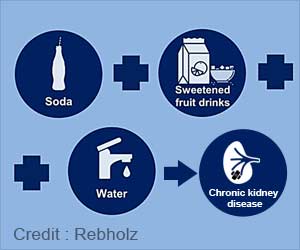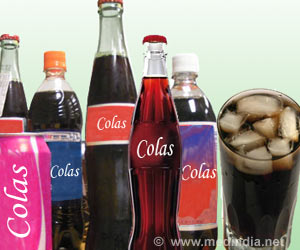Sugar-sweetened beverage taxes led to nearly a 50% reduction in purchases among lower-income households, suggesting health benefits and reduced health disparities.

Consumption responses to sweetened beverage taxes by household income in four U.S. cities
Go to source). New research from the University of Washington examined how sweetened beverage taxes affected purchasing behavior among around 400 households in Seattle, San Francisco, Oakland, and Philadelphia—cities that have recently implemented such taxes. The study was published online on September 30 in Health Economics.
‘Do You Know?
People who drink two or more sugary drinks per day have a 31% higher risk of death from heart disease than those who drink less than one per month. #medindia #heartdisease #sugarydrinks’





People who drink two or more sugary drinks per day have a 31% higher risk of death from heart disease than those who drink less than one per month. #medindia #heartdisease #sugarydrinks’
Advertisement
Understanding Consumption Patterns by Income Level
Researchers found that after the tax was introduced, lower-income households decreased their purchases of sweetened beverages by nearly 50%, while higher-income households reduced purchases by 18%. Since previous studies have shown that lower-income individuals consume sweetened beverages at a higher-than-average rate, these results suggest that taxes could help reduce health disparities and promote population health.“If households reduce their sugar intake, they will experience health benefits,” said Melissa Knox, co-author and UW associate teaching professor of economics. “Sweetened beverages are one of the largest sources of sugar in the American diet. They have all kinds of health consequences and don’t really provide any nutrition. The idea with the tax is that lower-income people, because they reduce their intake more, receive greater health benefits than the higher-income households.”
Advertisement
Tracking Household Purchases
Using the Nielsen Consumer Panel, researchers followed the households for a year before and after the tax was implemented in their city. Consumers were given a handheld scanner to report their purchases.The results showed that households experienced price increases for taxed beverages, with the difference persisting for at least one year post-tax. Price increases were largest for lower-income households – a 22% increase in sweetened beverage prices versus 11% for higher-income households. After the tax was implemented, lower-income households saw a 47% decline in purchases of sweetened beverages. Researchers didn’t observe a post-tax increase in cross-border shopping.
Advertisement
Shifts to Untaxed Beverages Post-Tax
“We also looked at untaxed beverages and found that lower-income households are substituting with untaxed beverages,” Knox said. “They’re using some of their money to go buy a different beverage, rather than buying a candy bar instead of buying a Coke.”Policymakers are particularly interested in the response of lower-income consumers due to their higher consumption on average of sweetened beverages and concerns that the taxes are regressive.
Tax Burden Disparities Among Income Levels
Previous research from the UW found that lower-income and higher-income households paid about the same amount toward the tax, which means lower-income households spent a higher proportion of their income. However, the study also showed more dollars went toward funding programs that benefit lower-income communities than those households paid in taxes. The annual net benefit to lower-income communities ranged from $5.3 million to $16.4 million per year across three U.S. cities.More past research from the UW found the tax was also associated with declines in childhood body mass index among children in Seattle compared to a well-matched comparison group.
“Together, this body of work suggests the tax is having the intended health benefits and this new evidence gives reason to believe health benefits could be larger for households with lower incomes,” said Jessica Jones-Smith, co-author and UW professor of health systems and population health.
Reference:
- Consumption responses to sweetened beverage taxes by household income in four U.S. cities - (https://onlinelibrary.wiley.com/doi/10.1002/hec.4905)
Source-Eurekalert










